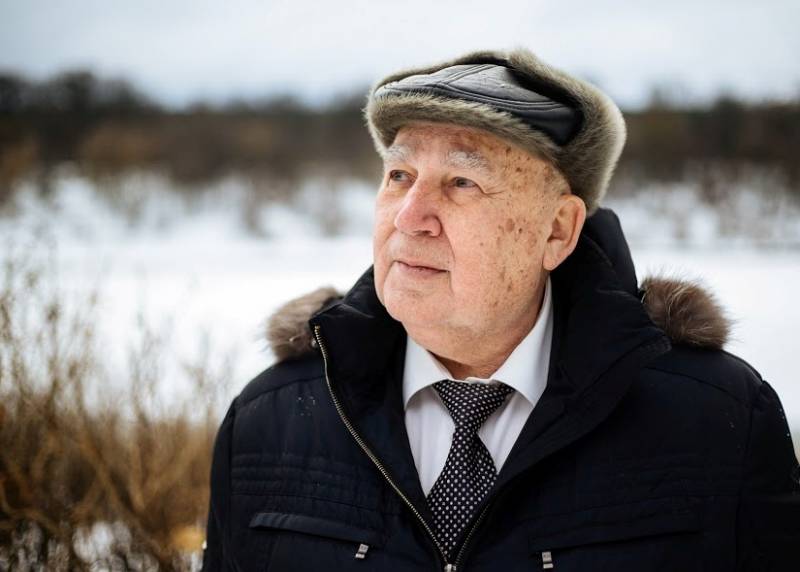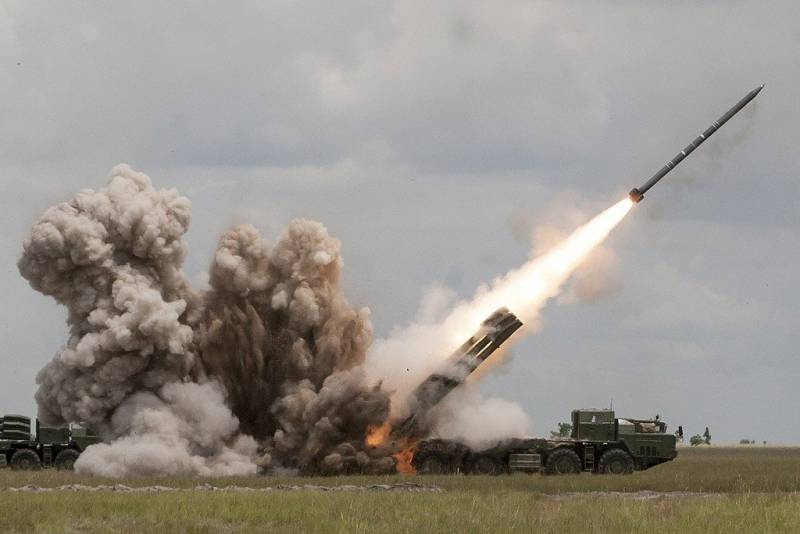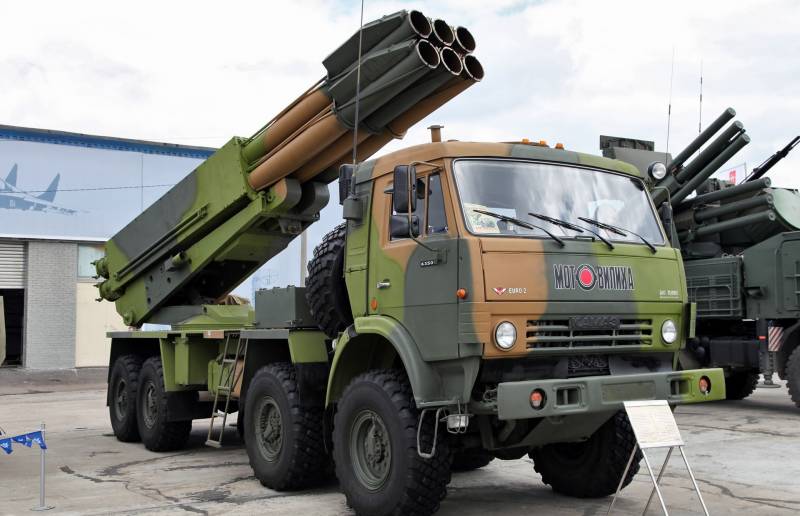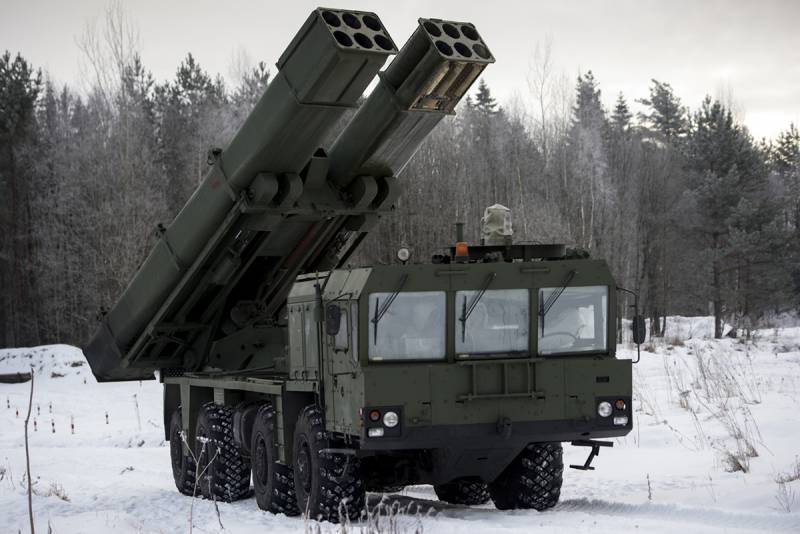Nikolay Makarovets and his “atmospheric” weapon
For the last three decades, Nikolai Aleksandrovich Makarovets headed the Splav Research and Production Association, it is the largest enterprise in Russia specializing in the creation of the MLRS. He was appointed to this position in 1985 year on the basis of an order of the Minister of Engineering of the Soviet Union. Today NPO “Splav” is part of the concern “Techmash” (Mechanical Engineering), which is an integral part of “Rostec”. Under the direct supervision of Nikolai Makarovts, the enterprise in Tula worked not only to create new types of weapons, but also to diversify production, as well as to create samples of civilian products. Nikolai Aleksandrovich was one of the developers of the methodology for converting the production of missile systems of volley fire and artillery shells, Tekhmash official website notes.
The conversion opened up the enterprise with opportunities to work in the civilian market, which in 1990s was necessary for the survival of the production itself. For his work in this area, Nikolai Aleksandrovich Makarovets was awarded the State Prize of the Russian Federation. In the difficult years for our state, he managed to retain the enterprise and valuable design personnel so that, together with Rosoboronexport, to bring the military-purpose production of the Splav association to the world market. In addition, Nikolai Aleksandrovich was actively engaged in teaching, passing on his knowledge to the new generation of designers. In 1996, the department “Launching and technical complexes of the RSZO” appeared in Tula State University (beginning with 2010, the department is called “Missile armament”), headed by Nikolay Makarovets. For his work in the field of education designer was awarded state titles and awards.
Here you can highlight the successes that have been achieved in recent years by the team of workers of the NGO “Splav”. Last year, the company reported on the implementation of the state defense order in full, the delivery rates of military products exceeded the 2017 indicators of the year immediately by 2,5 times, and the deliveries of military products over the past five years (from 2014 to 2018 year inclusive) increased at the enterprise almost 20 times , which indicates the demand for the products offered. At the same time, in 2018, at NPO Splav, it was possible by 26 percent to reduce the cost of producing rockets for the Tornado-S MLRS, which saved the Russian budget about 6 billion rubles. The achievement of these indicators without the work of Nikolai Aleksandrovich, who ran the enterprise from 1985 to 2015 a year, could hardly be imagined.
Destructive element
To date, the armament of the Russian army are three main calibers MLRS: 300, 220 and 122 mm. Designer and general director of NPO Splav, Nikolay Makarovets, was involved in the creation of all these systems. Specialists of the Main Rocket and Artillery Directorate of the Russian Ministry of Defense believe that, thanks to the work being carried out today in our country to upgrade the existing volley fire systems, their role and place in future military conflicts will increase significantly, and it will be the rocket artillery that will take the leading place among all the weapons available in disposal of the Ground Forces of the Russian Federation.
It so happened that all Soviet and then Russian MLRS have names intersecting with atmospheric phenomena that have destructive power. The youngest system in the line received the designation "Grad", the average in caliber 220 mm received the designation "Hurricane", well, the most deadly in terms of impact on manpower and equipment of the enemy - "Tornado". Already in Russia, in the course of the modernization of the RZSO “Grad” and “Smerch”, new systems appeared on the arms horizon under the designation “Tornado-G” and “Tornado-S”, respectively. According to Boris Belobragin, who is today the chief designer of NPO Splav, thanks to Nikolai Makarovts, our country has secured a leading position in the world in the area of the MLRS.
In the second half of the 80-s of the last century, Nikolai Aleksandrovich Makarovets was directly involved in launching the new domestic system of volley fire into mass production, which today many experts put on second place in terms of power after nuclear weapons. We are talking about the MLRS "Smerch", which still holds the position of the most powerful system in its class. The Russian army has about 350 of such installations, while the MLRS was actively exported, today the operators of this complex are at least 15 countries of the world.
Today, the Smerch MLRS (GRAU 9K58 index) has more than 10 types of various missiles that can effectively hit targets that are up to 120 kilometers away from the installation, which closely approximates the capabilities of this weapon to tactical rocket complexes. In the arsenal of this rocket launcher system there is a Tipchak-type UAV ammunition; this projectile allows the unmanned vehicle to be delivered to the target area, where it carries out reconnaissance and additional reconnaissance of targets for 20 minutes. In the standard version, the Tornado launcher has 12 guides, it is able to launch 12 missiles at the enemy in just 38 seconds. Preparation for firing takes no more than three minutes, while after a volley at troops or enemy targets, the Smerch MLRS battery can be removed from positions in just a minute, which increases the survival rate of the complex in combat conditions, quickly taking the machine away from a possible retaliatory strike from the enemy.
A full volley of just one such installation delivers several tons of explosives to the enemy’s heads, allowing them to cover an area of 67,6 ha. It is believed that the volley battery of data of multiple rocket launcher systems is able to delay the advance of the whole enemy motorized rifle division. At the same time, the Smerch MLRS can be equally effective not only against infantry and military equipment of the enemy, including armored, but also of stationary objects, including headquarters, command posts, communications centers, important industrial infrastructure.
A lightweight version of the famous complex was developed under the direct supervision of Nikolai Makarovts in Russia, which can be installed on the basis of a KamAZ truck with the wheel formula 8х8. This version of the MLRS Smerch received a package of guides designed to launch six rockets. For the first time in Russian stories reactive artillery for this complex was implemented the possibility of firing interchangeable package guides. This method will continue to be used in the modernization of other Russian MLRS. Such a technical solution greatly simplifies the process of recharging the entire system and increases its rate of fire, that is, it increases the most important characteristics of systems of this class.
Further improvement of the Grad and Smerch systems of the MLRS was the updated Tornado-G and Tornado-S complexes, which received a modern, fully computerized fire control system and equipment for working with the domestic GLONASS satellite navigation system. This navigation system is also widely used in the line of modern guided missiles for MLRS data. As noted by the Russian military, the development of new combat units of enhanced power and the improvement of the accuracy capabilities of the Tornado-S complex ensure an increase in the effectiveness of its combat use by an order of magnitude. At the same time, both complexes retain the possibility of using the entire line of rockets created, both old and new. This, undoubtedly, expands their combat capabilities, increasing the flexibility of the MLRS, simplifying supply and allowing significant savings in some situations.
MLRS "Tornado-G", according to the chief designer of the NGO "Splav" Boris Belobragin, has reached a new level of automation. Now, the crew commander can, without leaving the combat vehicle’s cabin, enter the necessary data for firing into each of the 40 missiles available. Each guide rail received an induction input device, so you can set the missile range in automatic mode (for example, one on 20 km, the other on 15 km, solving the combat tasks facing the calculation), while in the Grad MLRS it was necessary to install flight time on the remote tube projectile in manual mode. Now flight missions can be distributed directly from the installation cabin in just a few seconds.
A very important change for the upgraded version of the legendary Grad rocket launcher, which is in service with virtually 50 countries of the world, was the new types of ammunition. Specially for the Tornado-G, rockets with cumulative fragmentation striking elements were created, which make it possible to effectively deal with the lightly armored combat equipment of the enemy. Each of the projectiles carries 70-like elements, and a full volley of one installation only provides for covering the target with a whole swarm of 2800 striking elements. In addition, a high-explosive fragmentation projectile with an altimeter appeared in the arsenal of the installation, which allows you to set the height of the detonation of the ammunition; now it can explode at a height of several meters from the earth's surface. A rocket projectile, which received a detachable head, was also developed, and it descends by almost a sheer drop onto the enemy. The presence of a parachute system allows you to stabilize the projectile "Tornado-G" when reaching the target, providing a higher accuracy of destruction.
An important feature, according to Boris Belobragin, was the transition to a new type of fuel. Earlier in the rockets of the Grad MLRS, ballistic solid fuel (ballistic powder) was used. At the same time, in the development of a new line of ammunition for the Tornado-G, a mixed solid fuel was already used. In terms of its energy characteristics, it substantially exceeds the traditional ballistic powders, which were used for the first time in the rocket shells of the legendary Katyusha. The use of a new mixed solid fuel allowed the developers of NPO Splav to halve the engine of a missile, thereby increasing the warhead and increasing the power of ammunition.
A kind of cherry on the cake of modern Russian multiple launch rocket systems can be called the MLRS "Uragan-1M". State tests of the system began in 2012, and in 2016, new installations began to enter the Russian army. A unique feature of this system is its bikalibernost. It can fire with 220 mm and 300 mm caliber missiles, while firing is carried out from packages of replaceable guides, which is an important component of the development of modern Russian MLRS and greatly simplifies the process of their material and technical maintenance. The new installation is as universal as possible for machines of this class; it can fire with all types of existing 220 mm caliber missiles from the Uragan MLRS and 300 mm from the Smerch MLRS, as well as all new types of ammunition data ammunition. Recharging this machine is significantly simplified, since after the volley the entire package of guides is completely changed. This reduces the reloading time and allows you to quickly re-enter the installation in the battle, bringing down the hail of new deadly ammunition to the enemy positions.
With the departure of Nikolai Aleksandrovich Makarovts, an entire epoch is leaving, but his work will live. Having preserved in its time the potential and production capabilities of NPO Splav, it also ensured the safety of the shield of our Motherland. Thanks to his merits, as well as the work of all the designers and employees of the Splav plant, our armed forces continue to receive modern multiple-launch rocket systems today, retaining the leadership of our defense industry in this segment of the world arms market.
Based on materials from open sources





Information